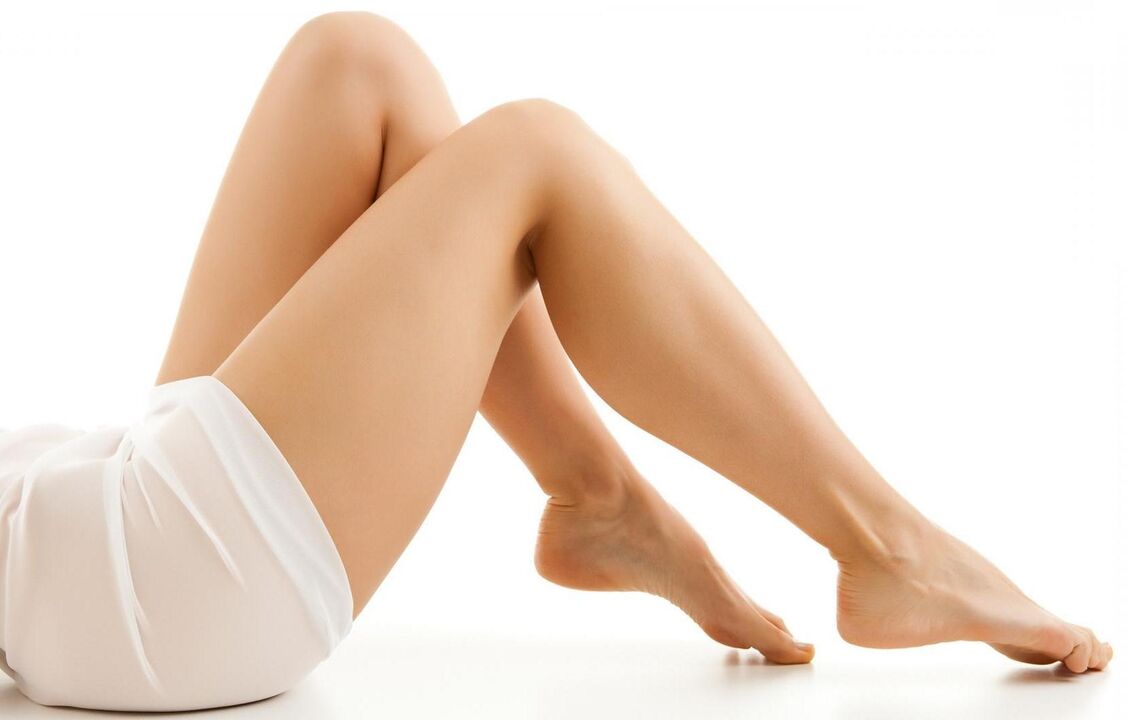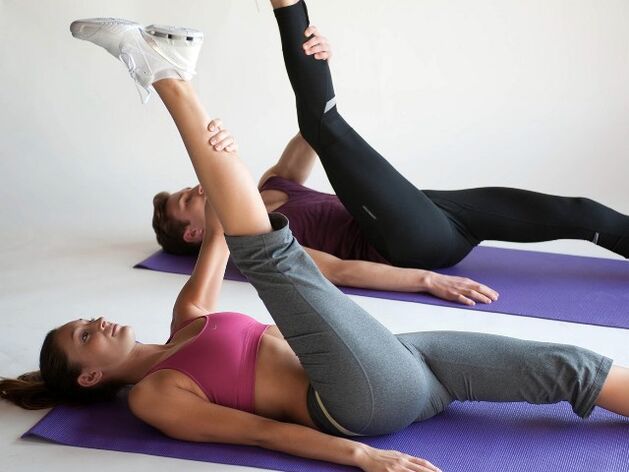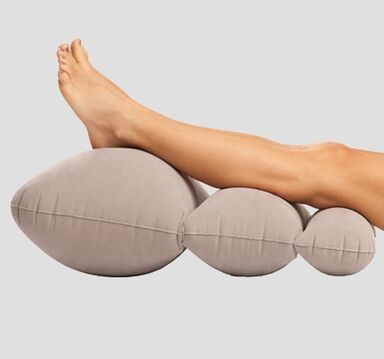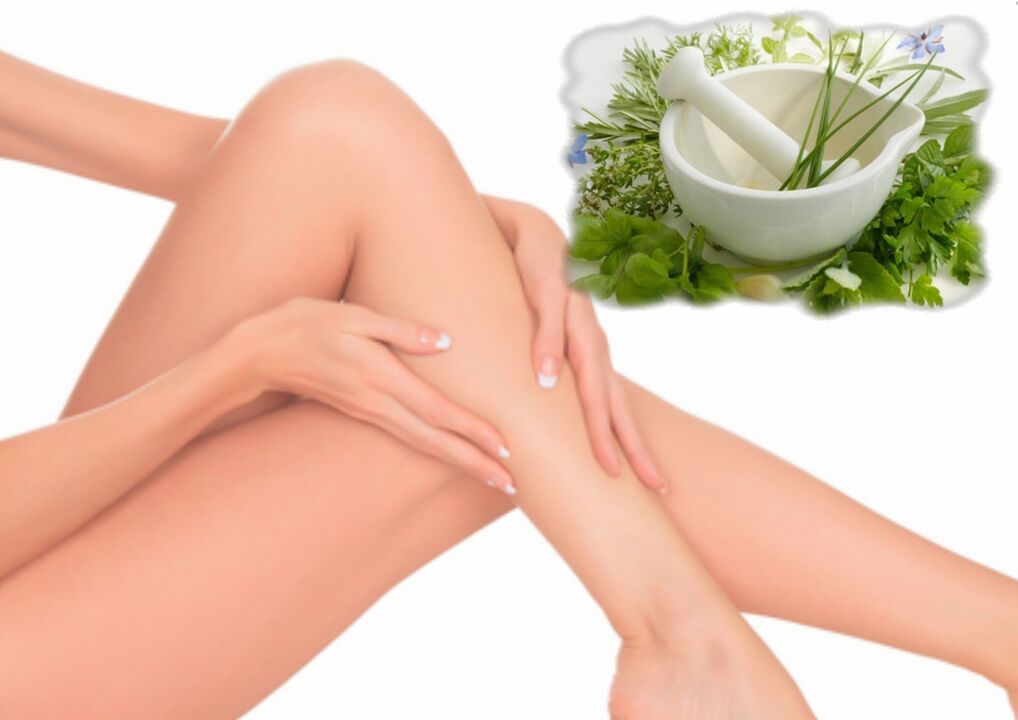Varicose veins - pathological stretching of the walls of peripheral veins, accompanied by failure of the valve apparatus and a violation of local blood flow.Changed vessels look extended, winding, bloating in the form of superficial nodes appears.The main section of the lesion is the veins of the lower extremities.The first complaint of the patient may be limited to a cosmetic defect in the form of vascular nets.Against the background of the progression of the disease, a feeling of severity in the legs and convulsions join. Varicose veins, as a rule, more often bothers women.The most common localization is the subcutaneous veins of the legs, a little less often - the hips.There is a group of factors provoking pathological stretching of the vascular wall: from external influences, ending with a genetic predisposition.It is worthwhile to get acquainted with the causes of varicose veins on the legs.

The causes of varicose veins
Against the background of disorders of the valve apparatus and an increase in the volume of blood flow, there is a persistent expansion of the vascular lumen.The composition of the venous walls includes connective tissue, which, with excessive stretching, is not able to decrease to the original state.Symptoms of varicose veins of the affected veins of the lower extremities progress: the blood moving along the stretched vessels is subjected to stagnation, exerting even greater pressure on them.This, in turn, leads to violations of the trophism of surrounding tissues.
Basic
The causes of varicose veins are numerous and can be combined with each other.Leading factors include:
- Features of physical activity.Varicose veins are often found in men engaged in constant weight lifting (movers).People of professions associated with prolonged standing on their feet (hairdressers), sitting position (office workers) are also subject to disease.
- Obesity.It applies to significant numbers of overweight.
- Hormonal changes.For example, the causes of varicose veins in women are a decrease in vascular tone during pregnancy against the background of progesterone production, taking any medicinal hormone-active drugs.
- Heredity.There are known cases of inheritance of the structure of the structure of connective tissue, which increase the likelihood of getting care of varicose veins.

Secondary
Both the characteristics of lifestyle and some types of diseases can aggravate a violation of venous blood flow.Secondary causes of varicose veins:
- Unknown shoes, symptoms of varicose veins in women (severity in the legs, cramps, vascular mesh) - a frequent consequence of prolonged walking in high heels.
- Excessively tight clothing.
- Irrational sports (raising the bar).
- Diseases of internal organs and systems-varicose veins due to severe chronic cardiovascular failure.
- Arteriovenous shunts are a pathological transfer of arterial blood to the venous channel.
- Education that press on the surrounding vessels.
- Stress, due to the general disorder of regulation of the tone of arteries and veins.
Stages
Varicosis on the lower extremities is not a simultaneously arising pathology, but a gradually developing process.In medical practice, several types of classifications are used.
The simplest and most universal shares 3 degrees:
- Compensation - small cosmetic defects without characteristic complaints.
- Subcompensted - progression of stagnation, development of classical symptoms.
- Decompensation - joining complications of varicose veins.

In demand among specialists is the clinical classification developed in 2000.Varicose veins on the legs include 4 stages:
- Varicose veins of subcutaneous or intradermal veins, not accompanied by a violation of the discharge of venous blood.
- Segmental varicose veins with the discharge of venous blood into the veins of the lower extremities (superficial).
- Extensive varicose veins with the same discharge as in the previous stage.
- The discharge of venous blood into deep vessels.
Symptoms
The clinical course of varicose veins directly depends on the stage of the disease.In the early stages, complaints relate only to external defects in the form of vascular nets and stars on the legs.The following symptoms are later joined:
- Varicose veins, the appearance of vascular subcutaneous nodes.
- Feeling of gravity, fast fatigue of the legs.
- Swelling of the lower extremities, often asymmetric.
- Pain syndrome, up to seizures, especially expressed at the end of the day.
Varicose veins, if you do not start treatment, can continue to cause metabolic disorders in the surrounding tissues.Initially, this will appear in the form of dryness, pigmentation of the skin.In the phase of decompensation, trophic ulcers appear, which are hard to heal.
Which doctor is engaged in the treatment of varicose veins
If symptoms appear, suspicions of the presence of varicose veins on the legs, you should consult a specialist.The specialist will determine the severity of the disease and prescribe conservative treatment.If there are indications for surgery, the doctor directs the patient to the vascular surgeon.

Diagnostics
To establish the fact of the disease, there is a sufficiently ordinary examination by the doctor.In order to clarify the stage of varicose veins and determination of therapeutic tactics, these research methods use:
- Clinical, biochemical blood test - are included in the standard minimum.
- Ultrasound Dopplerography is an assessment of vessel patency, the general condition of blood flow.
- Ultrasound duplex scanning - combines the standard ultrasound of the tissues.
- Revasography is an assessment of the level of hemodynamics of the limbs.
- Angiography is an invasive radiological study based on the introduction of a contrast matter into the vessel.
Treatment
Varicose veins on the legs are a pathology in the fight against which an integrated approach is required.The type of treatment depends on the stage of the disease.At the initial stages, they are limited to the prescription of drugs and non -invasive procedures.With the progression of varicose veins, they resort to surgery.
Medications
A number of drugs can be considered not only as part of conservative therapy, but also as preventive drugs to prevent varicose veins or its complications.Means are produced in several forms: ointments, gels for external use, tablets, capsules.Taking any of the medicines should be agreed with the doctor.Pain in the legs, swelling with varicose veins - symptoms that are successfully lending on conservative therapy in the early stages.Basically use drugs with tonic, anticoagulant, moderate anti -inflammatory effects.Treatment, as a rule, begins with the following means of local influence:
- With sodium heparin.
- Combined.
Procedures

Treatment of varicose veins of the lower extremities is based on the following mechanisms: improving regional blood flow through physical activity, artificial narrowing of blood vessels using external compression, or a complete overlap of the lumen of the affected vein.
Non -invasive methods:
- Therapeutic gymnastics.
- Wearing compression knitwear.
Invasive procedures:
- Sclerotherapy.It is based on the introduction of substances with sticky properties.The blockage vessel turns off from the total blood flow.Manipulation is indicated with the initial symptoms of varicose veins of the lower extremities.Not suitable for removing too large nodes.
- Ozonotherapy.By the principle, it is similar to the previous methodology.The introduction of ozone helps in the fight against vascular stars.
Folk methods
The use of funds of this category requires a mandatory conversation with the attending physician.Folk recipes can reduce the symptoms of varicose veins, but not completely cure.For this reason, they should be considered only as an auxiliary agent.
Examples of recipes:
- Place 3 apples in boiling water, cover with a lid and leave for 4 hours in heat.Drink softened apples, leave in a pan, mix.Strain.Add honey (1 tbsp. Spoon) to the resulting solution before use).Take a half -grinder before meals.
- Ointment with horse chestnut.Proportions - 5 chestnut fruits, 5 tablespoons of its flowers, 500 ml of the base (vegetable oil or petroleum jelly).Grind raw materials, mix all components.Place in a water bath, keep no more than 3 hours.Strain.

Surgery
Surgical treatment is the option of choice in cases where therapeutic methods of combating varicose veins are not effective.Currently, several surgical techniques have been developed that differ in the degree of invasiveness.Types of procedures in an increase in the volume of surgical intervention:
- Laser coagulation of vessels of the legs.It is divided into endovasal and contactless.In the first case, we are talking about the installation of a laser coagulator in the lumen of the affected vessel under local anesthesia, in the second-about the use of a laser without violating the integrity of the skin.The purpose of the methodology is to “cauterize” the affected area.Suitable for cases when varicose veins do not exceed 10 mm in diameter.
- Flebectomy.It is a radical surgical method of eliminating varicose veins.The treatment is based on the direct removal of the affected vessel.It is performed under general anesthesia in operating conditions.
Complications
What is varicose veins on the legs?This is originally a low -sympomic disease, fraught with serious complications as it progresses.It should be understood that swollen veins are a potential threat to general health.
Phlebitis
It is an inflammation of the venous wall.Flebitis is caused by its excessive stretching and, as a result, the microtrauma of the internal lining of the vessel.It is the most common complication of varicose veins located on the legs.As a rule, symptoms are manifested asymmetrically.The first complaint that can put on suspicions is the appearance of a dull aching pain, intensifying when touched to the affected area.The place of inflammation is compacted, the skin becomes hyperemic, warm in touch.With the development of acute phlebitis, the pain becomes burning, unbearable, the cover over the sick place takes a bright red color.
Thrombophlebitis
The specified complication of varicose veins arises, as a rule, follow the previous one.The mechanism of occurrence is the formation of a blood clot in the inflamed area of the vein.Flotting thrombus is particularly dangerous.One part of it is fixed to the vascular wall, and the other fluctuates freely in the lumen in the beat of the blood flow.The “tail” formed from the waist -affected varicose vein risks to tear himself away and take off towards the heart.Symptoms of thrombophlebitis of the veins of the lower extremities are similar to the signs of phlebitis.Hyperthermia, chills and weakness can additionally join them.Given the potential danger of such a state, in the presence of these complaints, you should consult a doctor as quickly as possible.

Phlebotrombosis
The complication of varicose veins caused by the hit of the thrombus into the lumen of deep veins.Symptoms directly depend on the location of the blood clot.If, for example, it has formed at the level of the calf muscle, a feeling of bursting will be disturbed, swelling will spread to an ankle.Edema and pain syndrome are distributed throughout the lower limb when the bloodboard enters the venous network at the level of the abdominal cavity.Phlebotrombosis is often hard to diagnose.Symptoms of this complication of varicose veins often have a lubricated clinical picture, and the pathology manifests already in the form of any life-threatening state.With timely detection of a complication, the doctor can resort not only to conservative, but also in surgical treatment.
Pulmonary artery thromboembolism (pulmonary
A blood clot, which was torn from the venous wall, moves to the right parts of the heart, then pushes into the pulmonary artery, causing a blockage of its branches.Depending on the caliber of the affected vessels, the flow of pathology varies from asymptomatic to acute, lightning fast.Signs of Tela:
- Sudden shortness of breath - the patient "catches" air with his mouth, like a fish.
- Tachycardia.
- Algic syndrome is characterized by pains like a heart attack.
- General weakness.
- An increase in temperature to subfebrile numbers (37-38 ° C).
- The blue of the skin, a cast -iron shade.
- Cough.
- Heltering.
This consequence of varicose veins is life -threatening and requires emergency measures.Treatment is carried out in a resuscitation department.In addition to the above complications, other consequences of varicose veins may occur:
- Trophic ulcers are one of their latest symptoms of varicose veins.
- Bleeding from a broken vein.
- Dermatitis.
Prevention
The disease can be warned even before the symptoms of varicose veins have appeared.Prevention measures include:

- Competent distribution of physical activity.It is recommended to alternate walking with seat.With a high predisposition to varicose veins, it is worth excluding the raising of severe cargoes, work associated with prolonged standing on the legs.
- Wearing comfortable shoes and clothes.The permissible height of the heel does not exceed 4 cm.
- Correction of body weight.Normal weight is an indicator that significantly reduces the likelihood of symptoms of varicose veins.
- The use of compression knitwear (as prescribed by a doctor).If a sense of severity appears, fatigue in the legs against the background of physical activity, work associated with prolonged standing, we are talking about laundry of the 1st degree of compression.
- Feet massage (only in the absence of pronounced varicose veins).Can be performed independently.
What is varicose veins?This is a stretch of the walls of peripheral veins, the occurrence of which is more associated with the characteristics of the lifestyle.In the initial stages, it creates the illusion of "harmlessness."However, the underestimation of the insidiousness of varicose veins is fraught with complications that are difficult to eliminate.With the help of simple preventive measures, you can prevent not only the pathology itself, but also avoid its distant dangerous consequences.


















